Blog
Jewellok is a professional pressure regulator and valve manufacturer and supplier.

How Does A Acetylene Gas Pressure Regulator Work?
- Pressure Regulator Valve Manufacturer
- 0-30 psi propane regulator with gauge, 2 stage nitrogen regulator, Acetylene Gas Pressure Regulator, Acetylene Gas Pressure Regulator Manufacturer, Automatic LED-type Oxygen Manifold System, best high pressure nitrogen gas regulator, best high pressure nitrogen gas regulator manufacturer, Changeover Manifold For Oxygen Nitrogen Co2, China Import Safety Nitrogen Gas Tescom Regulator, China Oxygen Pressure Regulator, China Wholesale Nitrogen Regulator, Cylinder Manifold Nitrogen Gas Supplier, Double Cylinder Manifold For Nitrogen, Gas manifold for aquaculture oxygen supply, Gas Manifold for Oxygen Supply, gas pressure regulator, High Flow Nitrogen Pressure Regulator, high flow nitrogen regulator, High Flow Oxygen Regulator, high flow rate nitrogen regulator, High Pressure 300bar Nitrogen Regulator, High Pressure Gauge for Oxygen Regulator 0-4000 psi, High Pressure Multi-Stage Nitrogen Regulator, High Pressure Nitrogen Gas Manifold System, high pressure nitrogen gas regulator, High Pressure Oxygen Regulator, High Volume High Pressure Oxygen Regulators, High Volume Oxygen Regulators, hospital oxygen manifold system, LCD Automatic Oxygen Manifold, low pressure oxygen regulator, Medical Oxygen Manifold, medical oxygen pressure gaug, medical oxygen pressure gauge factory, Oxygen, Propane Gas Pressure Regulator, ultra high purity gas pressure regulator, ultra purity gas pressure regulator
- No Comments
How Does A Acetylene Gas Pressure Regulator Work?
Acetylene gas, chemically known as C2H2, is a highly versatile and flammable hydrocarbon widely used in industrial applications, particularly in oxy-acetylene welding and cutting processes. Discovered in the 19th century, acetylene produces one of the hottest flames when mixed with oxygen, reaching temperatures up to 3,500 degrees Celsius, making it ideal for metal fabrication, brazing, and heating. However, acetylene’s inherent instability poses significant risks; it can decompose explosively if pressurized beyond 15 psi (pounds per square inch) without proper stabilization. This is why acetylene is stored in cylinders filled with a porous material saturated with acetone, which dissolves the gas and prevents dangerous reactions.
In any setup involving acetylene, a pressure regulator is an indispensable component. The acetylene gas pressure regulator serves as a critical intermediary between the high-pressure gas cylinder and the downstream equipment, such as a welding torch. Its primary function is to reduce the cylinder’s high inlet pressure—typically ranging from 200 to 250 psi when full—to a safe, consistent outlet pressure suitable for the application, often between 5 and 15 psi for welding. Without a regulator, the direct release of high-pressure gas could lead to equipment damage, inconsistent flame quality, or catastrophic explosions. Regulators ensure precise control over gas flow and pressure, enhancing safety, efficiency, and weld quality.
Understanding how an acetylene gas pressure regulator works requires delving into its mechanical principles, components, and the unique considerations for handling acetylene. This article explores these aspects in detail, drawing from engineering principles and industry standards. We’ll examine the basic mechanics of gas regulators, the specific adaptations for acetylene, key components, the step-by-step working process, safety features, and maintenance tips. By the end, readers will appreciate not only the functionality but also the engineering ingenuity behind this essential device.

Basics of Gas Pressure Regulators
Acetylene gas pressure regulators are fundamental devices in various industries, from residential heating to industrial manufacturing, where they control the flow and pressure of gases like oxygen, propane, nitrogen, and acetylene. At their core, regulators operate on the principle of pressure balance, converting variable high inlet pressures into stable low outlet pressures. This is achieved through a feedback mechanism that automatically adjusts gas flow in response to changes in demand or supply.
There are two main types of regulators: single-stage and dual-stage. Single-stage regulators reduce pressure in one step and are simpler, more compact, and cost-effective. They are suitable for applications where inlet pressure remains relatively constant, such as with acetylene cylinders that maintain consistent pressure until nearly depleted. However, they can exhibit a “decaying inlet characteristic,” where outlet pressure slightly increases as cylinder pressure drops. Dual-stage regulators, on the other hand, perform reduction in two phases: the first stage lowers the inlet pressure to an intermediate level (about three times the desired outlet), and the second stage fine-tunes it for precision. These are preferred in scenarios with fluctuating inlet pressures, like high-purity gas delivery in laboratories, but are bulkier and more expensive.
The science behind regulators involves a spring-loaded diaphragm system. High-pressure gas enters the inlet, exerting force on a diaphragm. A pre-set spring counters this force, and when balanced, the diaphragm positions a valve to allow just enough gas through to maintain the desired outlet pressure. If downstream demand increases (e.g., opening a torch valve), outlet pressure drops, causing the spring to expand and open the valve wider for more flow. Conversely, reduced demand closes the valve slightly. This dynamic equilibrium ensures consistent pressure despite variations.
Materials play a crucial role in regulator design. Bodies are often made from brass, stainless steel, or aluminum for corrosion resistance, while diaphragms can be elastomeric (like neoprene for flexibility) or metallic (stainless steel for durability in high-purity applications). Seals and seats use materials like PTFE or nylon to handle specific gases without reacting. For industrial processes, regulators must comply with standards like UL 252 for compressed gas regulators, ensuring they withstand endurance cycles and pressure tests.
In welding contexts, regulators are color-coded for safety—red for acetylene and green for oxygen—to prevent mix-ups. They also feature gauges: one for inlet (cylinder) pressure and one for outlet (delivery) pressure, allowing operators to monitor and adjust settings. Proper selection depends on gas type, maximum inlet pressure, required outlet range, flow rate, and environmental factors like temperature. Understanding these basics sets the stage for exploring acetylene-specific regulators, which incorporate additional safeguards due to the gas’s volatility.
Properties of Acetylene and Special Considerations
Acetylene stands out among industrial gases due to its unique chemical and physical properties, necessitating specialized handling in regulators. As a colorless, odorless gas (though commercial grades have a garlic-like smell from impurities), acetylene is highly energy-dense, releasing significant heat during combustion. However, its triple-bond structure makes it unstable; above 15 psi, it can self-decompose explosively, even without oxygen, leading to potential cylinder ruptures.
To mitigate this, acetylene cylinders are designed differently from those of other gases. They contain a monolithic porous filler (like calcium silicate) infused with acetone, which absorbs acetylene at high pressures (up to 250 psi) while keeping free gas pressure low. As gas is released, acetone vaporizes slightly, but the cylinder pressure remains stable until about 90% depleted, then drops rapidly. This contrasts with gases like oxygen, where pressure decreases linearly with volume.
These properties influence regulator design for acetylene. Regulators must limit outlet pressure to below 15 psi to prevent decomposition in hoses or torches. They use left-hand threaded connections (CGA 510 standard) with notched nuts to distinguish from right-hand threads for inert or oxidizing gases, reducing cross-connection risks. Materials are chosen to avoid reactions—copper alloys are avoided as acetylene forms explosive acetylides with copper; instead, brass or steel is used.
Safety is paramount. Acetylene regulators incorporate flash arrestors or check valves to prevent backflow and flashbacks, where flame travels back into the hose. Industry guidelines, such as those from the Compressed Gas Association (CGA), mandate that regulators be rated for acetylene’s flammability class. Operating temperatures affect performance; cold conditions can stiffen diaphragms, while heat might cause leaks.
In oxy-acetylene setups, the regulator works in tandem with an oxygen regulator. Typical settings are 5-10 psi for acetylene and 20-40 psi for oxygen in welding, but cutting requires higher oxygen pressures (up to 45 psi). Mismatching pressures can lead to unstable flames—too much acetylene creates a carburizing flame, while excess oxygen produces an oxidizing one. Operators must account for acetylene’s lower density and higher ignition energy compared to other fuels.
Environmental and regulatory considerations also apply. Acetylene production involves calcium carbide and water, generating sludge waste, but users focus on safe storage: cylinders must be upright to prevent acetone leakage. In summary, acetylene’s instability drives regulator innovations, emphasizing low-pressure delivery and robust safety integrations to protect users and equipment.
Components of an Acetylene Regulator
An acetylene gas pressure regulator comprises several interconnected components that work harmoniously to control pressure and ensure safe operation. At the heart is the body, typically forged from brass for its corrosion resistance and compatibility with acetylene. The body houses the high-pressure inlet chamber and low-pressure outlet chamber, separated by the control mechanism.
The inlet connection is a critical interface, featuring a CGA 510 left-hand thread to attach securely to the cylinder valve. This connection includes a filter or sintered metal screen to trap particles from the cylinder, preventing contamination of internal parts. Adjacent is the high-pressure gauge, which displays cylinder pressure (0-400 psi range), helping operators monitor gas levels.
The core control elements include the diaphragm, adjusting screw (with hand knob), spring, poppet valve (or seat), and orifice. The diaphragm, often neoprene-reinforced or stainless steel, acts as the sensing element, flexing in response to pressure differences. It’s positioned between the spring above and the valve below. The adjusting screw compresses the spring to set the desired outlet pressure, transmitted via the diaphragm to open or close the poppet valve against the seat.
The poppet valve and seat are precision-engineered; seats may be soft (urethane for low pressures) or hard (nylon or PCTFE for durability). The orifice size determines maximum flow capacity—larger for high-demand applications like cutting. The low-pressure chamber leads to the outlet connection, usually a hose barb or threaded port, and the delivery pressure gauge (0-30 psi for acetylene) shows the regulated pressure.
Safety components are integral. Relief valves vent excess pressure if the regulator fails, preventing bursts. Some models include integral flash arrestors with sintered elements to quench flames. Particle traps in high-pressure sections capture debris, and impact-absorbing knobs protect against drops.
Gauges are shatter-resistant with color-coded faces—red zones indicate unsafe levels. For high-purity or corrosive variants, stainless steel replaces brass. In dual-stage regulators, a second set of diaphragm, spring, and valve provides finer control.
Overall, these components ensure the regulator’s reliability. For instance, in welding, a typical acetylene regulator like the YQE-03 model features these elements to supply stable gas at adjustable pressures up to 15 psi, with flow rates suited for various torch tips.
Working Principle
The working principle of an acetylene gas pressure regulator revolves around a closed-loop feedback system that maintains equilibrium between opposing forces. Let’s break it down step by step.
First, the regulator is connected to the acetylene cylinder. The cylinder valve is slowly opened, allowing high-pressure gas (around 250 psi) to enter the inlet chamber. Initially, with the adjusting knob turned counterclockwise (minimum pressure), the spring is uncompressed, and the poppet valve remains closed against the seat by a small closing spring or gas pressure, preventing flow.
To initiate operation, the operator turns the adjusting knob clockwise, compressing the main spring. This force pushes down on the diaphragm, which in turn displaces the poppet valve, opening the orifice. Gas flows from the high-pressure chamber into the low-pressure chamber, building pressure there. As low-pressure side pressure increases, it exerts an upward force on the diaphragm, countering the spring force.
When these forces balance—at the set outlet pressure (e.g., 10 psi)—the diaphragm stabilizes, and the valve partially closes to maintain a steady flow. This is the equilibrium state. The delivery gauge reflects this pressure, and gas exits through the outlet to the hose and torch.
If downstream demand changes, the system responds dynamically. Opening the torch valve increases gas usage, dropping outlet pressure. The diaphragm senses this drop; the spring force now dominates, pushing the diaphragm down to open the valve wider, allowing more gas in until pressure restores. Conversely, closing the torch reduces demand, raising outlet pressure momentarily. The diaphragm lifts, compressing the spring and closing the valve to restrict flow, preventing over-pressurization.
For acetylene, this process is critical to stay below 15 psi. In single-stage regulators, as cylinder pressure decays near empty, outlet pressure might rise slightly due to reduced inlet force on the seat, requiring occasional readjustment. Dual-stage models minimize this by intermediate pressure reduction.
The mechanism’s precision depends on diaphragm sensitivity and seat design. Larger diaphragms provide better response to small changes, while encapsulated seats handle contaminants. In oxy-acetylene welding, this ensures a neutral flame: acetylene at 5-15 psi mixes with oxygen for optimal combustion.
Potential issues like “buzzing” (vibration from rapid opening/closing) are mitigated by dampening features. Overall, this principle—force balance via spring, diaphragm, and valve—enables safe, consistent gas delivery, adapting to real-time conditions.
Safety Features and Maintenance
Safety is embedded in acetylene gas pressure regulators through design and operational protocols. Key features include pressure relief valves that activate at excessive pressures (e.g., 20-25 psi), venting gas safely. Flash arrestors, often integrated or added inline, use porous barriers to stop flame propagation. Check valves prevent reverse flow, avoiding gas mixing in cylinders.
Color-coding and labeling specify “Acetylene Only” to prevent misuse. Gauges have burst plugs, and bodies are tested for high-impact resistance. CGA standards ensure compatibility, reducing explosion risks from improper connections.
Maintenance is vital for longevity and safety. Inspect regulators monthly for leaks using soapy water; bubbles indicate issues. Clean filters and replace worn seats or diaphragms annually or after 5 years. Store in dry, ventilated areas away from heat. During setup, purge lines to remove air, and never use oil on fittings—acetylene reacts violently with lubricants.
Troubleshooting common problems: if pressure creeps up, check for dirty seats; buzzing may signal low inlet pressure. Professional recertification every 5-10 years ensures compliance. Adhering to OSHA and NFPA guidelines minimizes accidents, emphasizing that proper maintenance extends regulator life while safeguarding users.
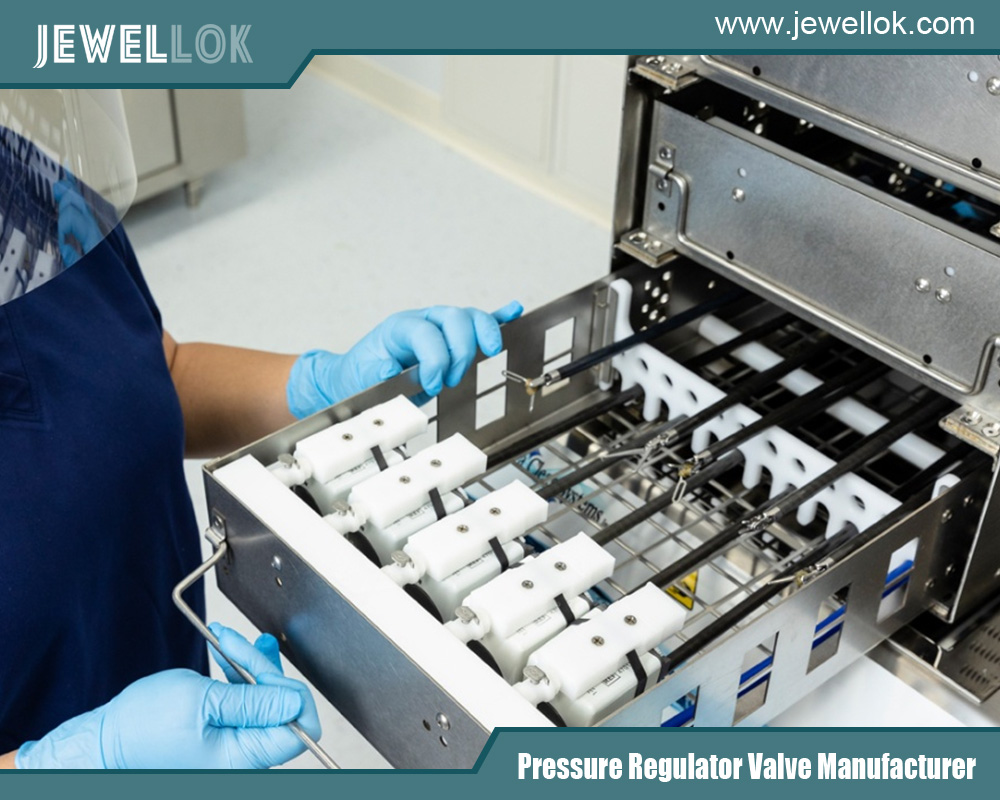
Conclusion
In conclusion, an acetylene gas pressure regulator is a sophisticated device that tames high-pressure gas for safe, effective use in welding and beyond. Through its components and balanced mechanism, it exemplifies engineering precision. Understanding its operation empowers users to handle acetylene responsibly, enhancing productivity and safety in industrial settings.
For more about how does a acetylene gas pressure regulator work, you can pay a visit to Jewellok at https://www.jewellok.com/ for more info.
Recent Posts
How Does the High Pressure Back Pressure Regulator Work?
The Complete Guide to Camco 59013 Single Stage Propane Regulator
A Closer Look at How a Single-Stage Propane Regulator Works
The Adjustable Back Pressure Regulator Application Guide
What is a High Pressure Argon Gas Regulator?
How a Gauged Two-Stage Propane Gas Pressure Regulator Works
The Best Natural Gas Pressure Regulators Manufacturers in USA
How to Choose the Right Laboratory Gas Valves
Tags
Recommended Products
-
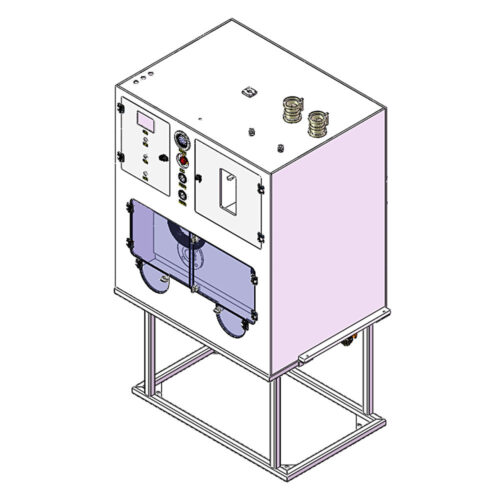
Clean Connection Cabinet JW-300-CCB Valve Manifold Box And Control Valve Box
-
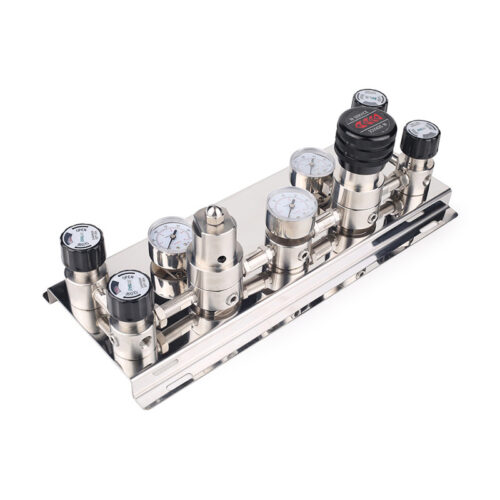
Automatic Gas Switchover System Automatic Switchover Manifold Automatic Gas Cylinder Switchover
-
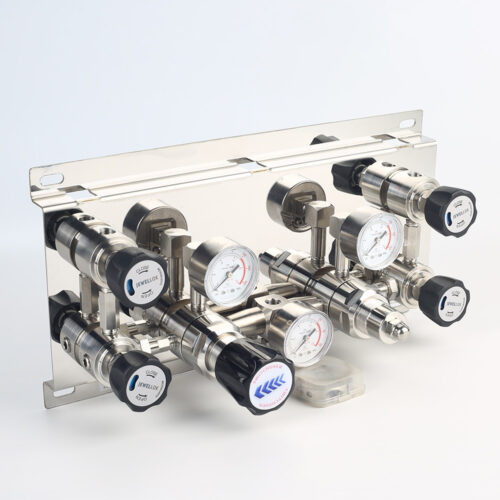
Pressure Control Panels For High Purity Gas Control System JSP-3AE Series From Pressure Control Panels Suppliers And Manufacturer
-

Line And Panel Mounting Adjustable Low Pressure Propane And Nitrogen Pressure Regulator JSR-3L & JSR-3LP Series
-
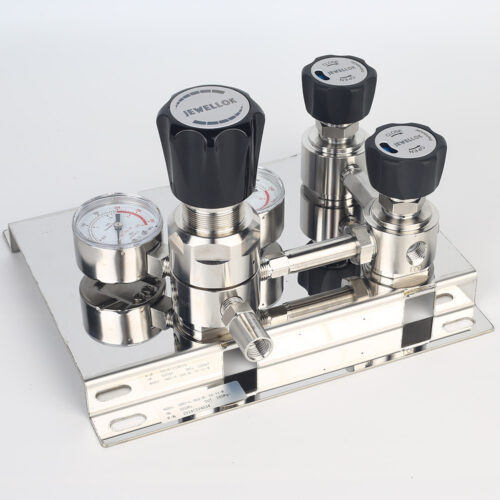
Stainless Steel 316L Single Stage Regulator Pressure Control Panels JSP-1E Series For Semiconductor Fluid Control
-

High Purity Stainless Steel Mini Tube Butt Weld Fittings For Semiconductor
-

UHP Metal Gasket Face Seal Fittings Vacuum Coupling Metal Face Seal Join Long Gland And Short Gland
-
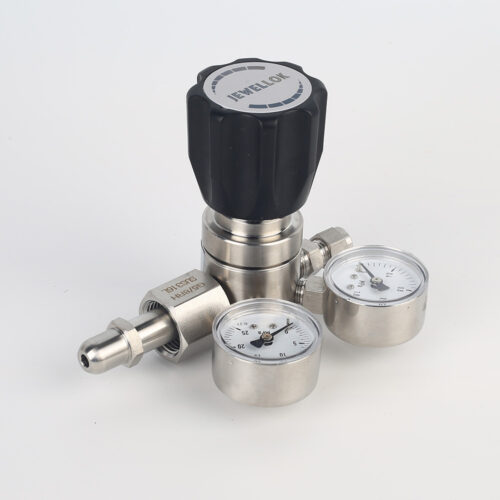
High Purity High Pressure Gas Cylinder Pressure Regulators Pressure Reducing Valve JSR-1E Series